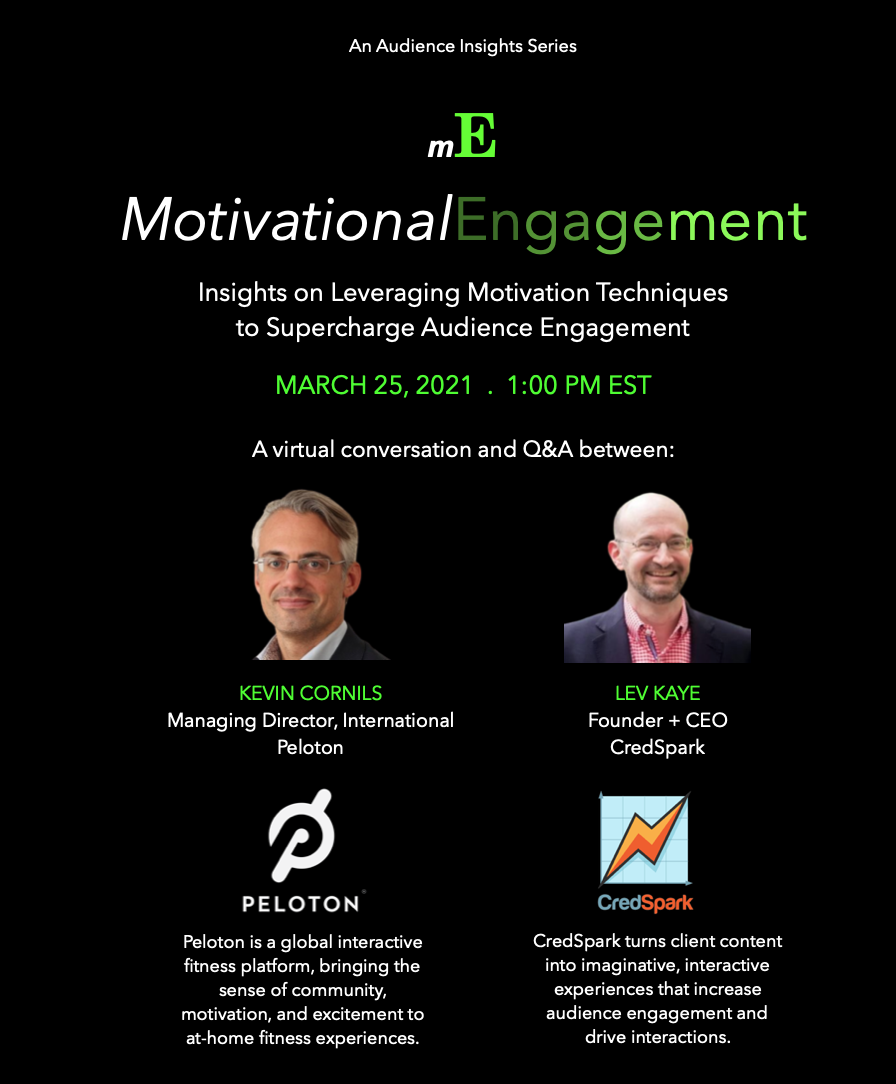Motivational Engagement
Virtue and Vice
I’ve long held the opinion that as a species, humans have one major virtue, and one major vice. That vice may be tanking your attempts to grow your brand’s audience.
Our virtue? We’re adaptable. You’ll find us living on the equator and near the poles. You’ll find us in deserts and rainforests, in dense cities and remote prairies, solving myriad problems and making a living in thousands of different ways.
Our vice? We take things for granted. We tend to assume that things will continue being, more or less, as they have been so far to date. We don’t save enough money for rainy days, and we wait to solve small problems until they’ve grown into bigger problems. If we find ourselves on a winning streak, we typically don’t quit while we’re ahead (even though we know we should.)
We’re all human, and that includes those who have digital audiences – publishers, associations, brand marketers, learning providers, and direct-to-consumer businesses. If you’re reading this, that list probably includes you. Which means that you’re likely taking for granted your audience’s digital engagement.
Don’t Take Your Audience for Granted
Look at your site traffic last month, your subscriber lists, or your email open rates. Do you assume this month’s numbers will be about the same? I bet you do – it’s only human to extrapolate past trends into the near future.
But here’s why that’s a vice: Assuming audience engagement trends will continue is to take your audience for granted. And life experience teaches all of us that if you take someone for granted for too long, sooner or later they’re going to stop caring. Put differently, they’re going to lose their motivation to spend time with you.
You have to earn your audience’s engagement, day in and day out. In short, you have to provide them with a little Motivation.
What’s My Motivation?
Actors, when preparing for a scene, spend time thinking about their character’s motivation. What’s driving them? What do they want? We can think of acting as an exercise in having extreme empathy with a character; in order to begin to understand someone else, you need to understand what motivates them.
Similarly, if you want to connect with your audience – a collection of individuals – you need to understand their motivations. Why are they engaging with you? What are they after? What will help them achieve what they want? How can you provide it to them?
It’s not just about understanding what motivates them: It’s about creating digital experiences that channel peoples’ intrinsic drives and then build motivational dynamics into the engagement experience.
The Right Dynamic
By ‘motivational dynamics,’ I’m referring to parts of an experience that support, nudge, encourage, and ideally excite people. If you’re at a carnival, the person running the Ring Toss booth exhorts you to ‘step right up and win a prize!’ If you’re running a marathon, people are cheering you on while handing you cups of water. If playing a game on your phone, you’re probably shown how many points you’ll need to unlock the next level.
None of those motivational dynamics is there by accident; each was intentionally designed into the carnival, the marathon, or Candy Crush and the like. Without these dynamics, you’d be less likely to participate in the first place, and less likely to persist once you started. It’s the rare individual who displays strong internal motivation across a range of activities—most of us need a little help getting and staying engaged.
Games Without Frontiers
‘Gamification’ became a big trend early in the 2010’s, and like many trends of yesteryear, the term today might seem dated. But while incorporating game dynamics is less buzzy, it’s no less important, simply because games have engaged humans for thousands of years. Why? Because games contain motivational dynamics that capture and hold peoples’ attention. ‘Holding attention’, like ‘providing great service’ and ‘delivering a quality product’, never goes out of style.
Which is why you need to start taking motivational dynamics seriously, no matter your audience, and no matter your business model. You can no longer take for granted peoples’ desire to engage with your event, your content, your brand–there are simply too many other claims on their attention. You have to motivate them to engage and persist.
A few things to consider in terms of whether you’re motivating your audience, and if so, how:
- Do you primarily measure engagement in terms of people consuming your content, or do you use other measures as well?
- Do you offer people opportunities to challenge themselves, either on their own or in comparison to others?
- Besides discounts or promo codes, do you offer your audience any forms of motivation?
- Is there anything fun to do on your website?
- Do you explicitly link engagement with your brand/content with larger goals or needs that your audience has expressed?
- Are you using motivational tools to build communities among your followers?
Let's take this conversation a little further…
On March 25 (1 PM ET), join me for mE: Motivational Engagement, a virtual conversation with Kevin Cornils, Managing Director for International for interactive fitness platform, Peloton. Nobody knows how to motivate an audience like Peloton. We’ll be discussing:
What is motivational engagement? How is it measured? What are some simple best practices?
When everyone is seeking your audience’s attention & time, how do you stand out from the crowd? Beyond just spending more to get in front of them more often, how do you get peoples’ attention in a differentiated way? How do you meet challenges of keeping their attention, once you’ve initially gotten it?
What are motivational dynamics, and how are they created? What are the key aspects of keeping people motivated? How do you figure out what motivates individuals, and balance negative vs. positive motivation? What are some design elements of digital experiences that lend themselves to motivation?
We’re looking forward to an interesting discussion that will foster new ideas and approaches to audience engagement. We hope to see you there. Sign up for an invitation today






